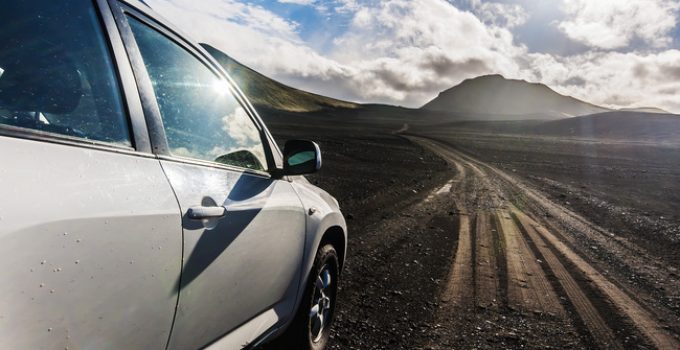
4×4 is the general term for all-wheel drive systems, the two-axle Power vehicles.
The term often refers specifically to the four-wheel drive versions of Jeep vehicles. It indicates that the engine's torque can be distributed to all four wheels at the same time.
How 4×4 works
Depending on the model and year of manufacture, jeeps have one of the following 4×4 drive types:
- Switchable: Normally, the torque is transmitted to the rear axle. If necessary, the driver can engage the front axle. A claw clutch in the transfer case is used to connect both axles.
- Permanent: Both axles are coupled to each other with the help of a locked central differential. Torque is continuously transmitted to each of the four wheels.
- Automatic: The car is driven by the front axle by default. This system connects the rear axle only when the front wheels slip. This requires a viscous or multi-disc friction clutch. This connects the rear axle to the cardan shaft, which receives the torque from the transfer case via a hypoid gear. This rotates continuously. Certain versions are equipped with an additional mechanical clutch so that the cardan shaft can be decoupled from the transfer case.
Types and characteristics of 4×4
| Name | Type of propulsion | Special characteristics | Jeep models equipped with this type of propulsion |
| Command-Trac | Switchable | 4×4 can only be used on smooth surfaces. | Cherokee XJ, KJ, SJ; Comanche MJ; Wrangler YJ, TJ, JK, JL; Liberty KJ; Wagoneer SJ |
| Command-Trac II | Instead of a control lever on the ground, the transfer case is operated by a switch on the center console. | Liberty QC; Cherokee QC | |
| Rock-Trac | There is no center differential. The differential of the wheels has a pneumatic or electric lock. The lowest gear has a gear ratio of 4:1, which allows the car to climb particularly steep slopes. | Wrangler Rubicon TJ, JK, JL; Wrangler Unlimited Rubicon TJ, JK, JL; Gladiator Rubicon JT | |
| Selec-Trac | Permanent with 2WD function | The open central differential is equipped with an electronic lock. If desired, it can also be locked, creating a permanent connection between the axes. A viscous coupling is also installed on certain versions. | Wagoneer XJ; Grand Wagoneer; Gladiator SJ; Comanche MJ; Grand Cherokee ZJ, WJ; Liberty KJ |
| Selec-Trac II | 4 wheel drive | This has a friction clutch that can be locked. | |
| Quadra-Trac | Permanent | To couple both axles, a viscous coupling or limited slip differential used. This can be locked if necessary. | Grand Cherokee ZJ; Wagoneer SJ |
| Quadra-Trac II | This is electronically controlled via a central locking differential, which is equipped with a gerotor pump and can be locked if necessary. The differentials of the wheels are open. | Commander XK | |
| Quadra-Trac I | There is no low gear. | Grand Cherokee WJ, WK, WW2; Commander XK | |
| Quadra-Drive | The center differential is a locking differential with gerotor pump. | Grand Cherokee WJ | |
| Quadra-Drive II | Front and rear electronic differential locks | Grand Cherokee WK, WK2; Commander XK | |
| Freedom Drive I | All-wheel drive | The rear axle is activated via an electromagnetic clutch when the Front wheels slip. | Compass MK; Patriot MK |
| Freedom Drive II | There is a low gear. | Patriot MK; Compass MK | |
| Active Drive I | An electronically controlled multi-disc friction clutch is used to connect the rear axle. Thanks to an additional manual clutch, it is possible to completely separate the cardan shaft. | Cherokee KL; Renegade | |
| Active Drive II | There are two separate low gears for each axle. | Cherokee KL | |
| Active Drive Lock | Rear Locking Differential | Renegade Trailhawk; Compass MP, M6 Trailhawk |
